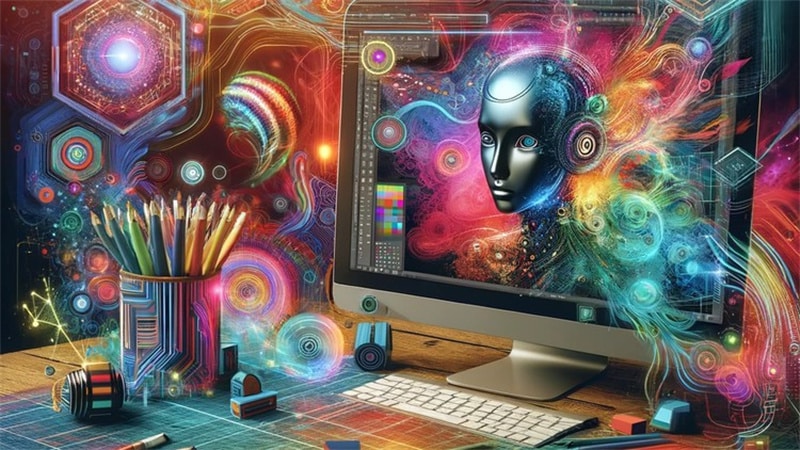The realm of graphic design is evolving at an unprecedented pace, and the incorporation of Artificial Intelligence (AI) is at the forefront of this transformation. With the increasing demand for multilingual content across the globe, the role of AI for multilingual graphic design has become crucial. This article delves into how AI is reshaping the graphic design industry, particularly in creating visually appealing and culturally relevant multilingual designs.

The Rise of AI in Graphic Design
The integration of AI in graphic design is not just a trend but a necessity. AI tools offer automation, precision, and efficiency, allowing designers to focus more on creativity and innovation. AI’s ability to analyze vast amounts of data means it can predict design trends and suggest optimal design elements that resonate with diverse audiences. For more insights on how AI predicts design trends, visit AI predicts.
Understanding Multilingual Graphic Design
In today’s globalized world, businesses aim to reach audiences beyond language barriers. Multilingual graphic design involves creating designs that are not only translated but also localized to fit cultural contexts. This is where AI’s natural language processing capabilities come into play, offering seamless translation and localization.
The Importance of Cultural Relevance
Creating a multilingual design goes beyond mere translation. It requires an understanding of cultural nuances and preferences. AI helps in this aspect by analyzing cultural data and suggesting design elements that are culturally appropriate and appealing. This ensures that the message is effectively communicated across different cultural landscapes.
AI Tools for Multilingual Graphic Design
Several AI tools are transforming the way designers approach multilingual graphic design. These tools offer features like automatic translation, localization, and even design suggestions. Notable tools include Fotor’s AI Design and Canva’s Magic Design, which are paving the way for more inclusive and accessible design solutions.
Automatic Translation and Localization
AI-powered translation tools offer real-time translation and localization, ensuring that the design remains coherent and relevant in different languages. This feature is particularly beneficial for businesses looking to expand their reach in non-English speaking markets.
Challenges in Multilingual Graphic Design
While AI offers numerous advantages, there are challenges involved in multilingual graphic design. These include maintaining design consistency across different languages and ensuring that the translated text fits the design layout. AI helps overcome these challenges by providing adaptive design solutions that accommodate text expansion and contraction in different languages.
Maintaining Brand Consistency
Brand consistency is crucial when creating multilingual designs. AI tools ensure that the brand’s visual identity is maintained across all languages, providing a coherent brand experience for the audience.
The Future of AI in Multilingual Graphic Design
The future of AI for multilingual graphic design is promising, with advancements in AI technology leading to more sophisticated tools and solutions. The integration of AI in design processes will continue to enhance efficiency, creativity, and inclusivity, making it an indispensable tool for designers.
AI and Ethical Design Practices
As AI continues to evolve, ethical considerations in design practices become increasingly important. AI tools must be developed with a focus on inclusivity and fairness, ensuring that all cultural and linguistic groups are represented accurately and respectfully.
Conclusion
The role of AI for multilingual graphic design is transforming the industry, offering innovative solutions that bridge language and cultural barriers. As the demand for multilingual content grows, AI will continue to play a pivotal role in creating designs that are not only visually appealing but also culturally relevant and inclusive.

FAQs
What is AI in graphic design?
AI in graphic design refers to the use of artificial intelligence technologies to enhance and automate design processes, allowing designers to create more efficient and creative designs.
How does AI help in multilingual design?
AI aids in multilingual design by offering tools for automatic translation, localization, and cultural analysis, ensuring designs are relevant and appealing to diverse audiences.
Can AI replace human designers?
While AI offers valuable tools and automation, it cannot replace the creativity and intuition of human designers. AI serves as a complementary tool that enhances the design process.







